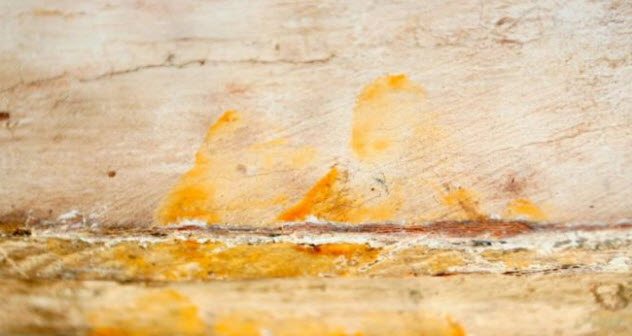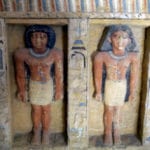 Politics
Politics  Politics
Politics  Weird Stuff
Weird Stuff 10 Eggs-traordinarily Odd Eggs
 History
History 10 Desperate Last Stands That Ended in Victory
 Animals
Animals Ten Times It Rained Animals (Yes, Animals)
 Mysteries
Mysteries 10 Devastating Missing Child Cases That Remain Unsolved
 Creepy
Creepy 10 Scary Tales from the Middle Ages That’ll Keep You up at Night
 Humans
Humans 10 One-of-a-kind People the World Said Goodbye to in July 2024
 Movies and TV
Movies and TV 10 Holiday Movies Released at Odd Times of the Year
 Politics
Politics 10 Countries Where Religion and Politics Are Inseparable
 Weird Stuff
Weird Stuff 10 Freaky Times When Famous Body Parts Were Stolen
 Politics
Politics The 10 Most Bizarre Presidential Elections in Human History
 Weird Stuff
Weird Stuff 10 Eggs-traordinarily Odd Eggs
 History
History 10 Desperate Last Stands That Ended in Victory
Who's Behind Listverse?

Jamie Frater
Head Editor
Jamie founded Listverse due to an insatiable desire to share fascinating, obscure, and bizarre facts. He has been a guest speaker on numerous national radio and television stations and is a five time published author.
More About Us Animals
Animals Ten Times It Rained Animals (Yes, Animals)
 Mysteries
Mysteries 10 Devastating Missing Child Cases That Remain Unsolved
 Creepy
Creepy 10 Scary Tales from the Middle Ages That’ll Keep You up at Night
 Humans
Humans 10 One-of-a-kind People the World Said Goodbye to in July 2024
 Movies and TV
Movies and TV 10 Holiday Movies Released at Odd Times of the Year
 Politics
Politics 10 Countries Where Religion and Politics Are Inseparable
 Weird Stuff
Weird Stuff 10 Freaky Times When Famous Body Parts Were Stolen
Top 10 Unusual Things Found On Ancient Surfaces
Ancient surfaces swing from dusty old clay to opulent metals and dyes. Whether they belong to breathtaking artifacts or boring pots, surfaces can tell a missing story as much as the artifact itself.
Sometimes, what hides in the cracks can solve sticky secrets or confound the experts further. Myths can be scientifically supported or old beliefs banished. Remarkably, at times, the unexpected shines through—the personality of an ancient artist or the cringeworthy ingredients used to create dyes.
10 The Smiley Pot

It is not often that one encounters an ancient potter with a sense of humor. A 4,000-year-old pot has archaeologists smiling because of an unexpected discovery on its surface.
In 2017, when it was unearthed in Turkey near the Syrian border, nothing seemed out of the ordinary. It was another shattered vessel from a site that has seen seven years of excavations and plenty of artifacts. The restoration team pieced together the big-bellied pot and noticed something very familiar to people today.
A smiley face.[1]
Sometime around 1700 BC, somebody dotted a pair of eyes into the wet clay and underlined it with a smile. The white vessel with its single handle was used to drink sherbet, a sweet liquid. While its purpose was clear, it might never be known why the artist added the happy expression.
Even so, the image is now considered history’s oldest smile. The site, Karkamis, once belonged to the Hittites, a Canaanite nation. It was also there that the Battle of Carchemish was fought. This clash, which occurred in 605 BC, was recorded in Jeremiah 46:2.
9 Paleoburrows

In the 2000s, Brazilian geologists began finding strange caves. Most had level floors and long, arched tunnels that wound into complex underground networks of exits, chambers, and passageways. They did not appear to have been made by any natural geological event.
Something found on the ceilings and walls offered a clue. Massive grooves crisscrossed the surface, and closer examination determined that these were ancient claw marks.[2]
What makes the whole thing so strange is the scope of the so-called paleoburrows. They are huge, even for the extinct giant sloths or armadillos that are the suspected architects. The biggest burrow was found in Rondonia in the Amazon. The combined length of its passages was 610 meters (2,000 ft). The primary tunnels were once 1.8 meters (6 ft) high and, at most, 1.5 meters (5 ft) wide.
Over the course of its creation, which took generations of diggers, the creatures removed 4,000 metric tons from the hill. There is no explanation for why the animals needed the elaborate shelters or why there are none in North America where giant sloths and armadillos also roamed thousands of years ago.
8 Long-Distance Grave Tar

A different sort of ship was found near River Deben in England. While it showed damage from active duty, the 27-meter (90 ft) ship was used as a tomb. The discovery happened eight decades ago at Sutton Hoo, an ancient cemetery and one of Britain’s most important burial sites.
Packed with precious metals and jewels, the ship is believed to be the tomb of King Raedwald, who died in AD 624 or 625. But none of this was as intriguing as a black substance found throughout the craft. It was initially thought to be Stockholm Tar, a waterproofing agent.[3]
With better technology available in 2016, tests returned a surprising result. The tar-like material was a rare kind of bitumen exclusive to the Middle East. What the petroleum-based asphalt was doing on the ship is not definitely understood.
However, the sought-after product fit with other valuable grave goods. Some were also imported, including from Egypt and the Eastern Mediterranean. The Sutton pieces also bore impressions as if once fastened to now-gone material like leather or wood. The concentric marks indicated turning, either from the attached object or the bitumen being used as a tool.
7 A Coffin Artist’s Fingerprints

In 2005, a restoration team worked on an Egyptian casket at the Cambridge Fitzwilliam Museum. The coffin belonged to a priest named Nespawershefyt who died around 1000 BC. Somebody peeked underneath the lid and found the fingerprints of a kindred spirit—a coffin artisan.
These did not belong to the dirty fingers of a colleague but the craftsmen who finished the coffin 3,000 years ago. For some reason, the ancient workers handled the inner lid before the varnish had dried. As a result, their impatience left a couple of fingerprints behind for posterity.[4]
However, the researchers were delighted with this personal touch. Another snippet about the carpenters came to light after the artifact underwent a CT scan at Addenbrooke’s Hospital. It turned out that they added extensive readjustments to the coffin’s original shape.
The fingerprints were only made public 11 years later in 2016 when they were included in the first major exhibition that focused on Egyptian artists and how their styles evolved over 4,000 years.
6 Green Magic For Children

Egyptians took colors seriously and assigned meaning and qualities to each one. Researchers knew that green represented growth, crops, and health. It was important enough to be placed as a scarab carving near a mummy’s heart.
But nobody had an inkling why green also featured prominently when it came to Egyptian children. According to ancient records and hieroglyphics, youngsters even wore green makeup.[5]
A recent discovery suggests that Egyptian parents believed that the shade would protect their offspring. While examining a child mummy, a bag was found on the body. Poking through the bag’s leather was a bright green amulet. Oddly, the stone was chrysocolla.
When the child died 4,700 years ago, Egypt was forming its early history and malachite was the most available green mineral. Chrysocolla was a rare commodity available only in the Sinai and the Eastern Egyptian Desert.
A previous grave find, a chrysocolla statuette depicting a youngster, supports the theory that the mineral (like the color green) “belonged” to children. Several experts agree that the amulet found on the toddler, who died of malaria, was probably meant to provide health and safety in the afterlife.
5 Confirmation Of Scythian History

When archaeologist Andrei Belinski cleared a burial mound, he found something that he kept secret for years. Located in Russia, the mound was a kurgan, a Scythian grave.
The Scythians were fearsome nomads who left nothing but thousands of kurgans behind. Any new information about their culture is prized. In 2013, Belinski’s team found a hidden chamber full of gold jewelry and vessels. The 2,400-year-old treasure was a complete surprise. To avoid looting, the discovery was kept quiet.[6]
The beautiful vessels revealed tantalizing history, myths, and behaviors of the Scythians. On the inside, a sticky black residue was identified as cannabis and opium. This brings the first confirmation of ancient Greek historian Herodotus’s claims that the nomads used drugs during rituals.
On the outer surface, scenes showed what could be their violent underworld. Another vessel depicted Scythian men battling each other, the old killing the young. This could be Herodotus’s “Bastard Wars.”
The historian wrote that after 28 years away fighting the Persians, the men returned home to find the grown children of their wives, who had been fathered by slaves. The fine details of the slaughter gave researchers their first good look at Scythian haircuts, shoes, weaponry, and even the sewing work of the clothes.
4 Bread Of Saint Francis

In Italy, the Friary of Folloni faced a harsh and hungry winter. One night, according to a 700-year-old legend, an angel delivered bread and left it on the doorstep of the friary.
The monks’ benefactor was not the angel. They believed that the food was sent by Saint Francis of Assisi, who was in France at the time. The monks even kept the alleged bread bag for seven centuries.
Scientists wanted to find out if the relic was indeed that old and, if possible, find traces of what was really once inside it. The cloth’s age placed it somewhere between 1220–1295, perfect for the year of the miracle in 1224.
Next, the researchers examined the inner surface of the textile and found ergosterol. This biomarker appears in mold linked to baking, brewing, and agriculture. Chances are that the medieval material came into contact with bread.
Together with the relic’s age, the data backs up the myth. The researchers graciously admitted that the bread could have been delivered to the struggling friary in 1224. However, since the bag was used as an altar cloth for 300 years, it could also have picked up ergosterol from bread that way.[7]
3 New Testament Dyed With Urine

Another religious artifact from Italy, this time from the town of Rossano, is a partial Bible called the Codex Purpureus Rossanensis. Containing only the gospels of Matthew and Mark, the 1,500-year-old book is among the most ancient New Testament illuminated manuscripts.
Scholars have long wondered about the lovely purple pages. Back in the day, dyes were difficult to make. It was assumed that the parchment had been treated with a known technique of the time involving a snail extract that produced Tyrian purple.[8]
In 2016, X-ray fluorescence could not detect bromine in the pages. Bromine is the identifying thumbprint of Tyrian purple. Taking a chance, scientists turned to the Stockholm papyrus, a dye recipe book penned around AD 300.
After whipping up several mixtures, a chemical match was found. The manuscript’s dark lavender came from orcein. This was extracted from the lichen Roccella tinctoria with fermented urine. The process needed ammonia, and there was no source other than the urine.
The same study also disproved claims that certain drawings in the 188-page codex were added centuries later. Tests revealed that it was impossible. All the ornate images were created with the same palette.
2 Tutankhamen’s Hasty Burial

In 2010, Egypt’s Supreme Council of Antiquities experienced panic. Something was happening in Tutankhamen’s tomb that they could not explain. Brown blotches marred nearly every surface, invading paintings, plaster, and even silver.
Concerned that tourists’ breathing encouraged the growth of microbes, the council called experts from Los Angeles. The spots were indeed microbes but long dead. The organisms sparked a double mystery.
DNA analysis failed to identify the matter apart from the possibility that it was a fungus. Secondly, its presence added a twist to an already-mysterious pharaoh. Tutankhamen had died suddenly around 3,000 years ago. Now it seems that he was buried just as quickly.
The most educated guess is that Tutankhamen died without his own tomb. Pharaohs prepared their graves long before death. In this case, one was commandeered, hastily prepared, and sealed while the paintings and plaster were still wet.[9]
This moisture, combined with the skin cells and breathing of the artists, allowed the microbes to populate. Indeed, the blotches have been found in no other Egyptian tomb. This leaves a tantalizing riddle: Why was the king buried so fast?
1 Spontaneous Color In Manuscripts

Another purple pigment damages scrolls all over the world. The ancient scribes never added the color, which spontaneously obscures ancient writings and destroys parchment.
To get to the bottom of the angry spots, researchers studied an affected book from the Vatican Secret Archives. The goatskin scroll is a 5-meter-long (16 ft) petition written in AD 1244. Its margins are bruised purple, and some pages are completely blocked out.
Suspecting microbes, researchers took flakes for gene sequencing. Unlike the mysterious strain in Tutankhamen’s tomb, this type could be identified. When the marine bacteria showed up, however, everyone was stunned. The scroll’s history did not include any time near the ocean.
But the afflicted manuscripts had one thing in common—they were made of animal hides. This was the clue that cracked the case. Hides were cured with sea salt, which added the marine organisms, including purple-producing species.[10]
These bloomed in the goatskin scroll whenever the temperature and humidity became just right. Unfortunately, some snacked on the hide’s collagen, causing pieces to fall off. The damage is irreparable, but researchers remain hopeful that they can safely remove the remaining pigment one day.
Read about more ancient secrets that have been revealed on 10 Rare And Revealing Things Salvaged From Ancient Ships and 10 Remarkable Discoveries That Came From Ancient DNA.








